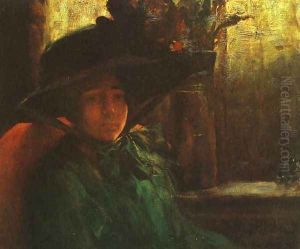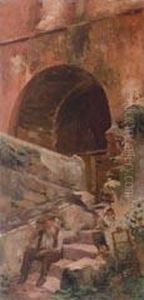Artur Timoteo da Costa Paintings
Artur Timoteo da Costa was a prominent Brazilian painter, born on November 16, 1882, in Rio de Janeiro. He was known for his significant contributions to Brazilian art, particularly during the early 20th century. His work reflects a transition period in Brazilian art, where academic painting traditions started to give way to modernist influences.
Costa showed an affinity for art from a young age and pursued his passion by enrolling at the Liceu de Artes e Ofícios do Rio de Janeiro in 1894, where he studied under notable Brazilian artists such as Henrique Bernardelli. Later, he continued his studies at the Escola Nacional de Belas Artes (ENBA), which was the center for fostering academic art in Brazil during that period.
Costa's talent was evident, and he quickly gained recognition for his skillful painting technique and his ability to capture light and shadow. His subjects varied, including portraits, landscapes, and genre scenes, often depicting the daily life of Brazilian people. In his work, one can observe the influence of European academic painting, but also hints of the emerging modernist trends that were beginning to take hold in Brazil.
In 1906, Artur Timoteo da Costa was awarded a travel prize to Europe, where he spent a significant time in Paris. There, he was exposed to the burgeoning modern art movements, and the experience abroad enriched his artistic vocabulary. Upon his return to Brazil, Costa continued to paint and exhibit his works, earning him critical acclaim and several awards.
Despite his successes, Artur Timoteo da Costa's life was marred by racial prejudice; he was one of the few Afro-Brazilian artists of his time to achieve prominence in a predominantly white, elite artistic community. His legacy is not only his body of work but also his role in breaking racial barriers in the Brazilian art world.
Artur Timoteo da Costa's career was cut short by his untimely death on March 23, 1922, at the age of 39. Today, he is remembered as a key figure in the transition of Brazilian art from the 19th to the 20th century, and his paintings are considered valuable examples of the cultural and artistic developments of his time.

